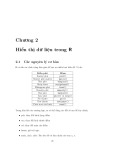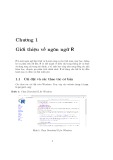
Lecture 16

Recap
Introduction to Algorithm Analysis
Different Functions
Function’s Growth Rate
Three Problems Related to Algorithm Running Time
Find Minimum in an Array
Find Closest Point in a Plane
Find Collinear Points in a Plane
Maximum Contiguous Subsequence Sum Problem

Theorem 6.1

Proof
Place the following N + 2 balls in a box: N balls
numbered 1 through N, one unnumbered red ball and one
unnumbered blue ball. Remove three balls from the box.
If a red ball is drawn, number it as the lowest of the
numbered balls drawn.
If a blue ball is drawn , number it as highest of the
numbered balls drawn.
Note that if you draw both a red and a blue ball, then the
effect is to have three balls identical numbered. Order the
three balls.
Each such order corresponds to a triplet solution to the
equation in Theorem 6.1.









![[Mới nhất] Lecture note Data visualization - Chapter 28](https://cdn.tailieu.vn/images/document/thumbnail/2020/20200723/nanhankhuoctai10/135x160/2961595506403.jpg)
![[Mới nhất] Lecture note Data visualization - Chương 27](https://cdn.tailieu.vn/images/document/thumbnail/2020/20200723/nanhankhuoctai10/135x160/8161595506425.jpg)
















